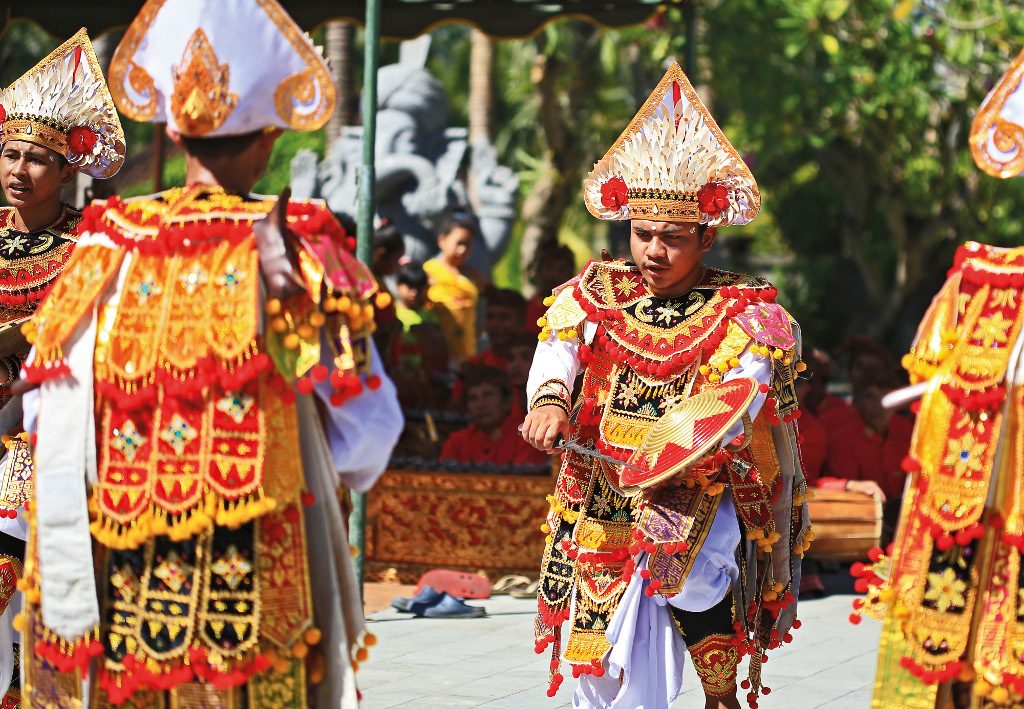It is amazing to find that this little island is the home of so many dances, we can lose count if we tried to include new choreography that seems to arise to the surface every day. The dances in Bali falls into several classification, just like taxonomy of trees or animals. Let’s look at Baris Dance for instance.

In general, Baris Dance displays a story of a warrior who bravely defends his territory. Baris Dance is performed almost in every part of the island, especially to begin a holy ceremony. Hence, Baris Dance is considered a sacred dance. There are many types of Baris Dance and some types are site specific, which can only be found in particular villages or regencies. This is because the type of dance is named based on the object held by the dancers during the performance. And it is said that the object held is decided by the ceremony.
Baris Tamiang is one of many styles of Baris Dance. Baris Tamiang is performed by a group of men and performed prior to a religious ceremony. There are several things that make this dance different for other Baris, though costume wise is more or less the same. The dancers of Baris Tamiang hold daggers and shields, locally named Tamiang. In the beginning of the performance they are all dancing together while holding the Tamiang with their right hand, their dagger is safely attached on their back. As the dance continues, the group splits into two lines and the beautiful fight scene begins.
The routines of the dance illustrate several warriors’ characters, which are focused, explosive, energetic, and bold. It is not only the eyes, head and arms that exude expression and move to depicting a story, even the feet of the dancers seem to move with a significant purpose, which is to make them appear solid. In addition to this, their costume makes them looks valiant and muscular, just like a royal general.
Baris Tamiang is originated in Denpasar and usually performed on a sacred ceremony of several temples in the Sanur area. However, recently I watched the dance being performed in Taro village in the Ubud hinterland on a religious ceremony. The costume was different to the one I watched several years ago in Sanur, where the dancers were wearing white basic costumes adorned with golden accessories layered (lamak) on the front side from collar to knee, while the one in Taro was wearing lamak in multi colours. Even though it wasn’t performed at its place of origin, the dancers really nailed it and the whole performance successfully sent out spiritual vibration, and captivated the attention of the entire audience.






